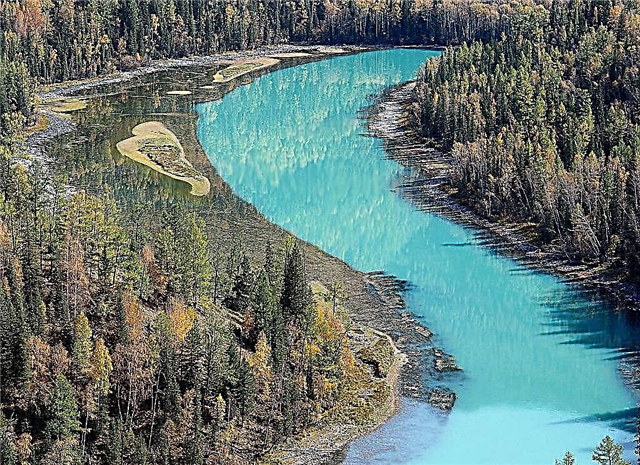Vesuvius is an active volcano in continental Europe and is rightfully considered the most dangerous in comparison with its island neighbors Etna and Stromboli. Nevertheless, tourists are not afraid of this explosive mountain, as scientists constantly monitor the activity of volcanic rocks and are ready to quickly respond to possible activity. Throughout its history, Vesuvius has often become the cause of massive destruction, but this made Italians proud of their natural landmark.
General information about Mount Vesuvius
For those who do not know where one of the most dangerous volcanoes in the world is, it is worth noting that it is located in Italy. Its geographical coordinates are 40 ° 49′17 ″ s. sh. 14 ° 25′32 ″ in. The indicated latitude and longitude in degrees are for the highest point of the volcano, which is located in Naples, in the Campania region.
The absolute height of this explosive mountain is 1281 meters. Vesuvius belongs to the Apennine mountain system. At the moment, it consists of three cones, the second of them is active, and the upper one is the most ancient, called the Somma. The crater has a diameter of 750 meters and a depth of 200 meters. The third cone appears from time to time and disappears again after the next strong eruption.
Vesuvius consists of phonolites, trachytes and tephrites. Its cone is formed by layers of lava and tuff, which makes the soil of the volcano and the land in its vicinity very fertile. A pine forest grows along the slopes, and vineyards and other fruit crops are grown at the foot.
Despite the fact that the last eruption was more than fifty years ago, scientists do not even have doubts about whether the volcano is active or extinct. It has been proven that strong explosions alternate with weak activity, but the action inside the crater does not subside even today, which suggests that another explosion can occur at any time.
The history of the formation of a stratovolcano
Volcano Vesuvius is known as one of the largest on the European part of the mainland. It stands as a separate mountain, which was formed due to the movement of the Mediterranean belt. According to the calculations of volcanologists, this happened about 25 thousand years ago, and even information is mentioned when the first explosions occurred. Approximately the beginning of the activity of Vesuvius is considered 7100-6900 BC.
At an early stage of its emergence, the stratovolcano was a powerful cone called today the Somma. Its remains have survived only in some parts of the modern volcano located on the peninsula. It is believed that at first the mountain was a separate piece of land, which only after a few eruptions became part of Naples.
Much credit in the study of Vesuvius belongs to Alfred Ritman, who put forward a current hypothesis about how high-potassium lavas were formed. From his report on the formation of cones, it is known that this happened due to the assimilation of dolomites. Shale layers that date back to the early stages of the development of the earth's crust serve as a solid foundation for the rock.
Types of eruptions
For each volcano, there is a specific description of the behavior at the time of the eruption, but there is no such data for Vesuvius. This is due to the fact that he behaves unpredictably. Over the years of its activity, it has already changed the type of emissions more than once, so scientists cannot predict in advance how it will manifest itself in the future. Among the types of eruptions known for the history of its existence, the following are distinguished:
- Plinian;
- explosive;
- effusion;
- effusion-explosive;
- not suitable for general classification.

The last eruption of the Plinian type is dated 79 AD. This species is characterized by powerful ejections of magma high into the sky, as well as precipitation from ash, which covers all nearby territories. Explosive emissions did not happen often, but in our era you can count a dozen events of this type, the last of which happened in 1689.
Effusion outbursts of lava are accompanied by the outflow of lava from the crater and its distribution over the surface. For the Vesuvius volcano, this is the most common type of eruption. However, it is often accompanied by explosions, which, as you know, was during the last eruption. History has recorded reports of the activity of the stratovolcano, which does not lend itself to the types described above, but such cases have not been described since the 16th century.
We recommend reading about Teide Volcano.
The consequences of the activity of the volcano
Until now, it has not been possible to identify the exact regularities regarding the activity of Vesuvius, but it is known for sure that between large explosions there is a lull, in which the mountain can be called asleep. But even at this time, volcanologists do not stop monitoring the behavior of magma in the inner layers of the cone.
The most powerful eruption is considered the last Plinian, which occurred in 79 AD. This is the date of the death of the city of Pompeii and other ancient cities located near Vesuvius. Historical references contained stories about this event, but scientists believed that this was an ordinary legend that had no documentary evidence. In the 19th century, it was possible to find evidence of the reliability of these data, since during archaeological excavations they found the remains of cities and their inhabitants. The lava flow during the Plinian eruption was saturated with gas, which is why the bodies did not decompose, but literally froze.
The event that took place in 1944 is considered not happy. Then the lava flow destroyed two cities. Despite the powerful lava fountain with a height of more than 500 meters, mass losses were avoided - only 27 people died. True, this cannot be said about another explosion, which became a disaster for the whole country. The date of the eruption is not exactly known, since in July 1805 an earthquake occurred, due to which the Vesuvius volcano woke up. As a result, Naples was almost completely destroyed, more than 25 thousand people lost their lives.
Interesting facts about Vesuvius
Many people dream of conquering the volcano, but the first ascent of Vesuvius was in 1788. Since then, many descriptions of these places and picturesque pictures have appeared, both from the slopes and at the foot. Today, many tourists know on what continent and on what territory the dangerous volcano is located, since it is because of it that they often visit Italy, in particular, Naples. Even Pyotr Andreyevich Tolstoy mentioned Vesuvius in his diary.
Due to such an increased interest in the development of tourism, considerable attention was paid to the creation of appropriate infrastructure for climbing the dangerous mountain. First, a funicular was installed, which appeared here in 1880. The popularity of the attraction was so huge that people came to this region only to conquer Vesuvius. True, in 1944 the eruption caused the destruction of the lifting equipment.
Almost a decade later, a lifting mechanism was again installed on the slopes: this time of a chair type. It was also very popular with tourists who dreamed of taking a photo from the volcano, but the earthquake in 1980 severely damaged it, no one began to restore the lift. Currently, you can climb Mount Vesuvius only on foot. The road was laid up to a height of one kilometer, where a large parking lot was equipped. Walks on the mountain are allowed at certain times and along the laid routes.









